I once brought a group of millennial-age students on a heritage outing to a ringfort. Pointing out that thousands of these antiquities have remained untouched across Ireland, I explained that they were spared by a belief that tiny people known as fairies lived within, and it brought ill fortune to interfere with them. Next, I asked the group if they believed fairies existed. All said no. I then requested that someone go into the fort, break off a small twig and bring it out. There was a long silence until one guy replied, “Do you think we’re stupid?”
In ancient times, it made sense for people to dread what they could not understand. The invention of the electric light and the coming of science-based reasoning should have ended these fears. Clearly, however, fear is hard-wired within us. We still delight in being told that there are forces out there beyond our comprehension, which is the basis of all superstitions. The result? Halloween has become huge because it allows us to explore our deep anxieties while secure in the knowledge we are in a safe environment where we can come to no real harm.
So why not visit some of the eerie places listed below over this coming Halloween, and enjoy the spine-tingling feeling that comes with confronting some of our deepest anxieties.
Bothar Draíochta (Magic Road), Mahon Falls, Co Waterford
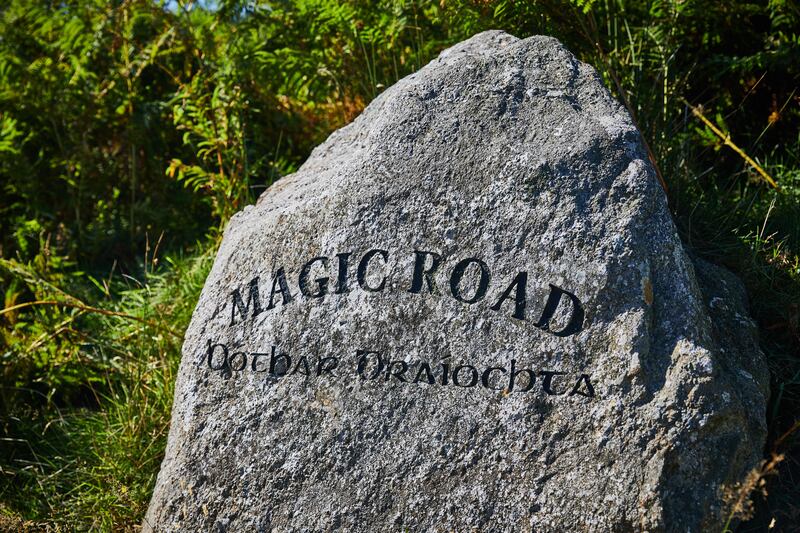
The Magic Road (find it by searching Google Maps) is a good place to start, since a mysterious occurrence is guaranteed. Beyond the entrance to the Mahon Falls, a solitary, favour-adorned thorn bush stands frail and isolated. Opposite it, switch off your engine and put your gear shift in neutral. Local tradition claims this is a fairy tree and, as if to emphasise this, you will soon have the unnerving experience of your car reversing uphill as if being pushed by an invisible team of energetic leprechauns. Rationally-minded killjoys have visited here with surveying equipment and concluded that the “magic road” is an optical illusion. Most visitors will, however, find it hard to believe this physics-defying piece of enchantment is merely an illusion when they observe the astonishing speed at which stationary vehicles are propelled upwards.
‘I am divorced at 60, envious of my ex-husband’s new life and struggling with loneliness’
Look inside the most expensive house sold in Dublin so far this year
‘I learned about Irish time. People arrive late and think they are on time’
Bishop Casey’s Buried Secrets review: ‘He had no fear of being caught’
Crumlin Road Gaol, Belfast
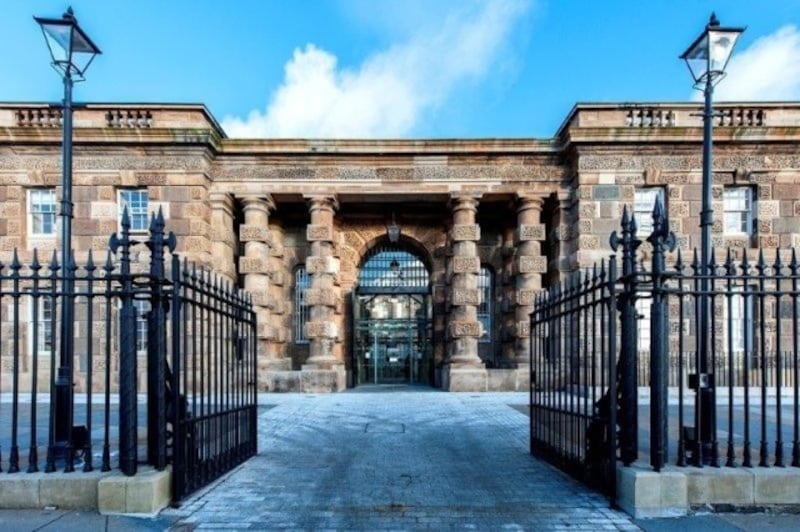
At any time, a tour of Crumlin Road Gaol is an eerie experience with its spooky underground tunnel, dungeon, condemned cell and execution room, where the dangling hangman’s rope is guaranteed to send a shiver down your spine. In the run-up to Halloween, it is transformed into one of Ireland’s scariest attractions. On the Paranormal Ghost Hunt, which will return for Halloween 2023, visitors are guided through the Victorian jail in semidarkness on an eerie journey with only one way out. Seventeen men were executed here, and some of their ghosts are reputed to move restlessly through the building, with the tour searching for evidence of this. Admission £25; book at crumlinroadgaol.com
Bay Lough, Knockmealdown Mountains, Co Tipperary
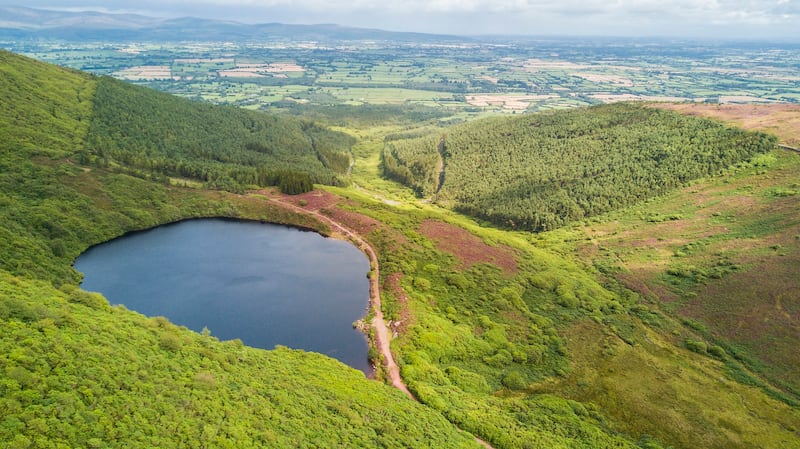
This is a walk for twilight along a well-constructed path from the head of the Vee Gap on the R668 between Clogheen and Lismore. It takes about 15 minutes to reach a point where glaciation has re-engineered the mountainside to create brooding Bay Lough. Even in high summer, you are unlikely to see bathers here, for a deeply held local tradition warns that this is a haunted lake. In half-light, it will be easy to agree as the darkened waters will seem mysterious and eerie – a place, perhaps, to hold a dark secret. Indeed, local folklore claims that this is the last resting of the witch Petticoat Loose. If you have brought the kids along, this is the time to recall the story of how this alleged sorceress was banished into the lake by a local priest. As revenge, her ghostly arm will rise from her resting place in the depths to ensnare anyone foolhardy enough to enter these lonesome waters after dark.
Irish Wake Museum, Waterford City
The Almshouse, one of Waterford’s oldest buildings, has been transformed into Ireland’s newest museum. Perfect for a Halloween experience, it traces the Gaelic customs, traditions and superstitions associated with death from the earliest times to the 20th century. Between October 30th and November 3rd, the museum is offering its After Dark Halloween Event. This provides an opportunity for a guided tour to explore the many unique rituals and superstitions associated with an Irish wake. Visitors will experience storytelling from the 15th to the 20th centuries, with different themes associated with dying explored. Admission €11; waterfordtreasures.com
St Michan’s Church, Dublin
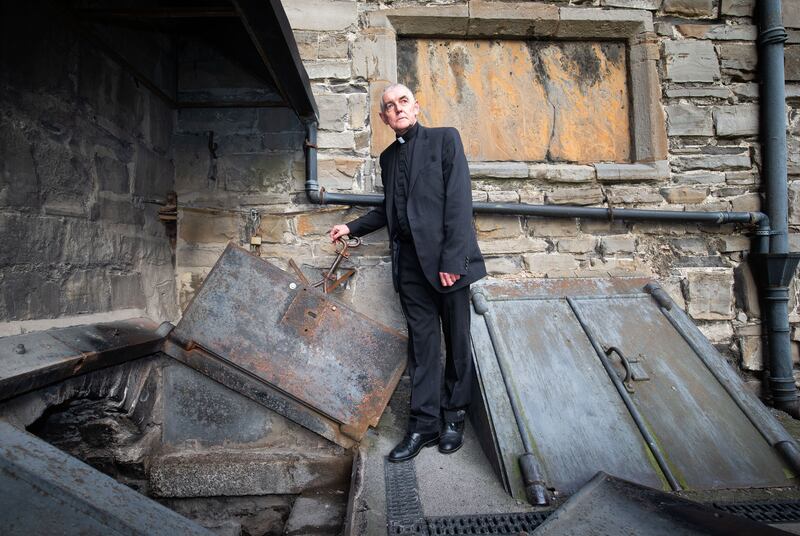
Want to go the full monty for a genuinely eerie but unsanitised Halloween experience? Then, it has to be the mummified bodies in St Michan’s on Church Street in Dublin, which date from the 17th, 18th and 19th centuries. It is a tight squeeze to enter the subterranean vaults where coffins are piled high upon each other, including those of the Shears brothers who were executed for their part in the 1798 Rising. Most astounding, however, are the four bodies revealed when their coffins fell apart. Accidentally preserved by the dry limestone environment, they lie as a stark reminder of the ultimate destination facing all of us. Open Tuesdays and Thursdays only, 10am-12.30pm and 2pm-4.30pm
Crotty’s Cave, Comeragh Mountains, Co Waterford
Commonly described as the Age of Ascendancy, the 18th century could also be labelled the age of rapparees. It was a time when wealthy British settlers in Ireland were vulnerable to attack when travelling. In a society without a police force, rapparees could live off rich pickings. One such was Waterford’s William Crotty. With an unmatched knowledge of the Comeragh Mountains, he was adept at giving pursuing redcoats the slip by retreating to a claustrophobic cave above a remote lake, now named after him. His eventual betrayal and execution in 1742 immediately spawned tales of his golden hoard awaiting a lucky finder in the Comeragh fastness. Other stories maintained that Crotty’s ghost is still to be seen seeking his lost treasure astride a white horse. If you would like to visit Crotty’s Lake and its dark and spooky cave, the location is marked on the Comeragh 1:25,000 Scale Map, from East West Mapping. It involves a one-hour walk and an upward scramble to gain access.
The Hellfire Club, Montpelier Hill, Co Dublin
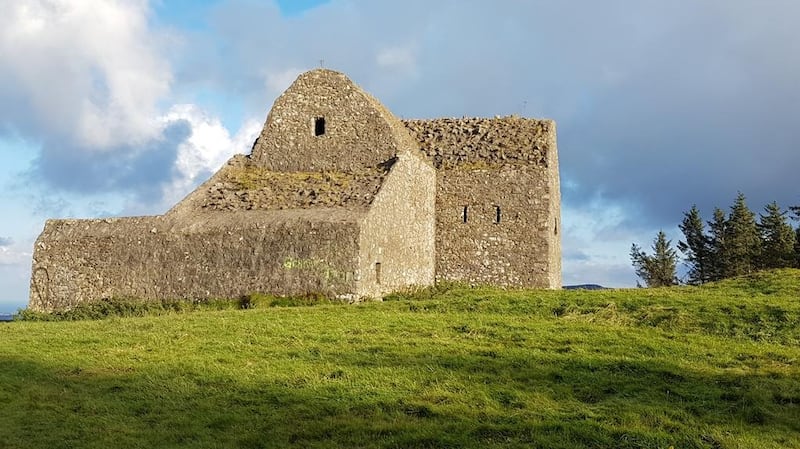
Built as a hunting lodge, William Conolly, a wealthy 18th-century politician, made the initial mistake of using stone pillaged from earlier burial tombs. The resident spirits were apparently none too pleased and decided to haunt the new building. Later, the lodge is alleged to have become a secluded meeting place for the Irish Hellfire Club – a secret organisation dedicated to satanism. With its stone roof and gloomy interior, the building certainly fits the bill as a location for dabbling in the occult. To reach the Hellfire Club, take the R115 south from Rathfarnham and park in the dedicated car park. Follow the blue arrows for the Montpelier Loop on the short, steep ascent to the building. You may not have a paranormal experience within the spooky interior but the splendid views over Dublin city will more than compensate.
The Hanging Tree, Aherlow, Co Tipperary
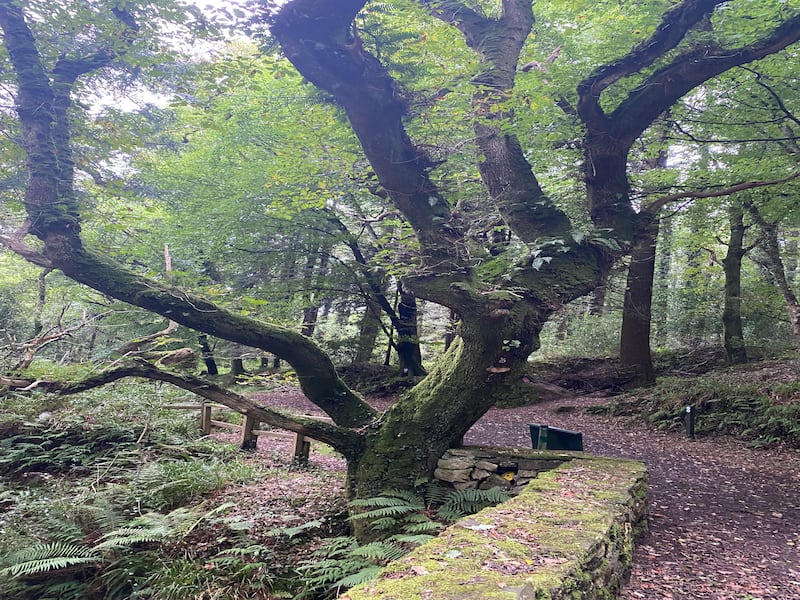
Even without macabre associations, this makes a lovely outing for all the family. Follow the blue arrows for the 4km Bianconi Loop from the Christ the King trailhead, Aherlow, and continue along sylvan paths until you reach an old road once used by the long cars of transport innovator Charles Bianconi. Downhill at a pretty little bridge, you will come upon a sad-looking sessile oak that is nearing the end of its long lifespan. Known locally as the “Hanging Tree”, this is where people were executed in the 18th century for inconsequential crimes and their bodies left suspended as a warning to passersby not to tangle with the establishment. Afterwards, complete the Bianconi Loop by following the arrows back to the trailhead, while musing, perhaps, that the 21st century may not be the worst time to live after all.
Leap Castle, Coolderry, Co Offaly
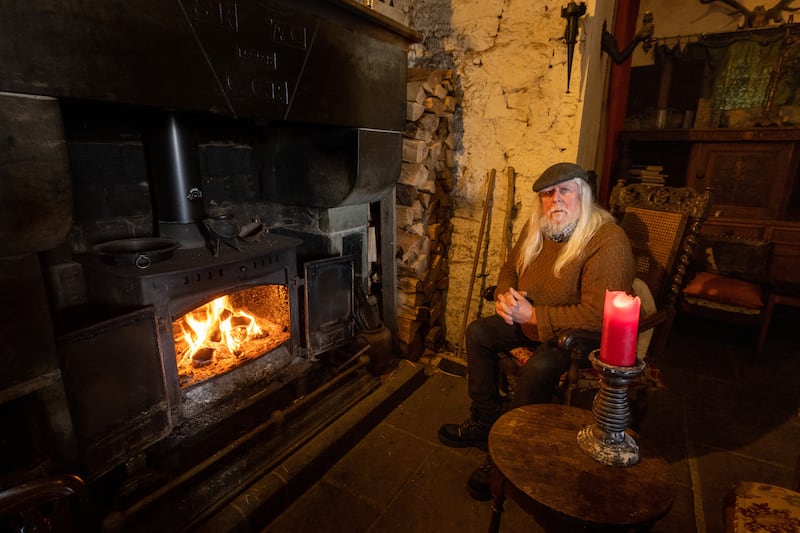
Billed as the world’s most haunted castle, Leap certainly has had a long and bloody history since it was first built as a tower house in the 13th century. On a visit, you are not guaranteed to encounter an apparition, but you will certainly meet someone who has. On the tour, owner Sean Ryan tells of his frequent encounters with the many sceptred figures haunting the building. Certainly, you are spoiled for ghostly choice with tales, among many others, of a murdered priest, a young girl named Emily who fell from the castle tower and the Red Lady, who haunts the castle while holding the dagger she used to kill herself. And if you talk nicely to him, you might be able to convince Sean, as a former All-Ireland champion tin whistle player, to play a tune or two. Tours by appointment only; 086 8690547 or seanfryan@outlook.com
Ghost Tour, Kilkenny
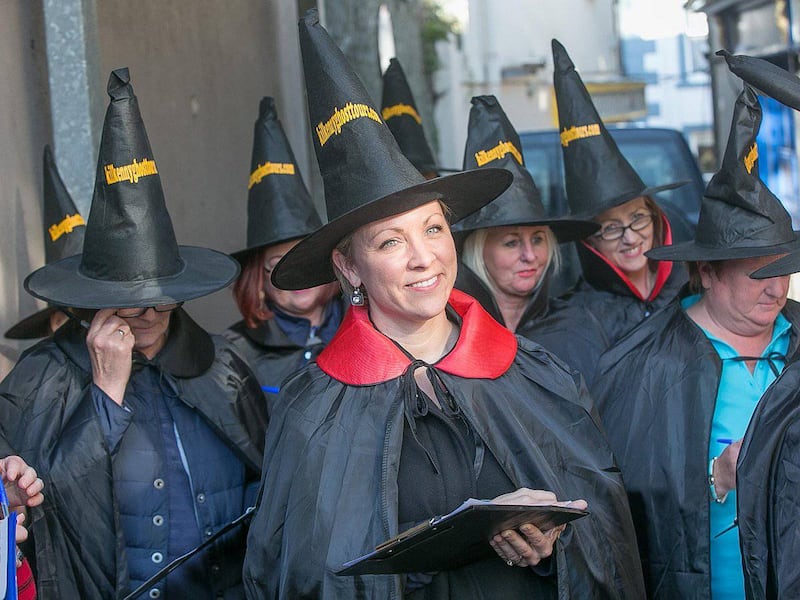
This isn’t so much a ghost tour as a history of the dark and macabre events that have taken place in the Marble City. The setting is certainly right as the tour leads through many of the dark laneways of Medieval Kilkenny. Pride of place inevitably goes to Dame Alice Kyteler, who was the first person condemned for witchcraft in Ireland. She immediately fled the country, but her servant Petronella confessed under torture to the crime of heresy. She was flogged and burned at a stake on High Street, Kilkenny, in November 1324. There are also tales, among others, about the “curse of Richard Shee” and the sceptre of a white lady who haunts Kilkenny Castle believed to be Margaret Butler, grandmother of Anne Boleyn. 8pm daily; €16; kilkennyghosttours.com



